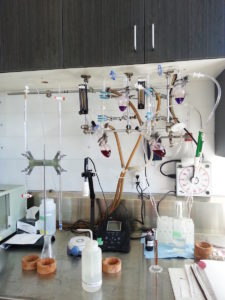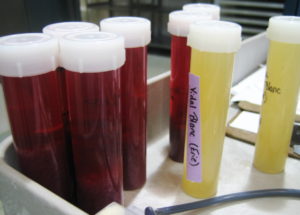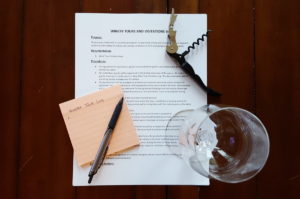(Just in time for harvest!)
In working with a number of wineries throughout the country that range in the 2,000 case to 15,000 case annual production size, I have found that many struggle to get a firm grip on wine analytical testing. Of course, this also includes testing incoming fruit, juice, or must, as well as pre-bottling analysis before a wine goes to bottle.
Enology, the science of winemaking, is difficult to incorporate into a winery. Making room – both physically and mentally – for enology requires a mindset associated with wine quality. It’s my professional opinion that it is impossible to make good, quality wine without having adequate accessibility to analytical testing and defined production limits for various tests. Otherwise, the winemaker is defaulting to guesswork or “recipe” oriented practices associated with amateur or enthusiast winemaking techniques. Yes, it’s likely that “wine” will result in the end. However, there’s a lack of understanding wine quality and what constitutes that wine being good or commercially sound.
Do you struggle to love wine analysis?
I get that enology and wine analysis is not the “most fun” topic when we talk about wine. It’s often forgotten when wine is marketed to consumers or when wine writers are elegantly “selling” a wine. Nonetheless, this is a real part of making wine across the globe.
On July 24, 2019 (4:00 PM, EST), the Darn Good Winemakers session will focus on a presentation titled: Fundamentals of a Winery’s Lab. We’re going to learn more about:

Photo by: Denise M. Gardner
- Why measuring the wine’s chemistry and microbiology is important
- Do you have to measure anything with [grape] juice or wine? If so, why?
- Making the winery lab a welcoming environment
- Baseline essential analytical methods every winery should have, regardless of size, and how to obtain that numerical index.
- A wine analytical schedule: which analyses are important at the basic stages of wine production.
You can join our winemakers’ network at any time! Joining the Darn Good Winemakers makes you a part of the live sessions for 12 months. At each session, you’ll get time to ask your most pertinent winemaking questions with me, while never paying an additional consulting fee. Plus, you can access past Darn Good Winemakers sessions with your subscription.
But, for today’s blog post, we’re going to focus on two of the essential components associated with a winery’s lab:
- Basic analytical needs for harvest (juice analysis).
- Incorporating outside analysis when needed.
Basic analytical needs for harvest (juice analysis)
Measuring grape juice is the first step in enhancing wine quality. This is the starting point, the baseline, and the first indication that a process step may need to be altered according to the juice’s chemistry or microbiology.
1. What should the winemaker measure during harvest?
These next few parameters are what I consider essential:
- pH: The pH is part of the baseline acid measurement for your juice. At the end of primary fermentation, a direct comparison can be made based on changes caused by fermentation. This numerical value should also indicate if an acidification or de-acidification step should occur prior to fermentation.
- TA: Titratable acidity (TA) not only indicates how sour tasting the juice tastes, but this may be another indicator in terms of whether or not the juice should get acidified or de-acidified. For example, if the pH is high (>3.70), but the TA is also high (>7.00 g/L tartaric acid), the winemaker may choose not to add an acidifying agent.
- Brix: The Brix provides the winemaker with concentration of sugar within the juice. This value helps estimate the alcohol content if the wine is fermented to dryness. The value may also act as an indicator as to whether or not chapitalization is required.
- YAN: Yeast assimilable nitrogen or yeast available nitrogen is an indication of how much nitrogen is available for the yeast as a nutritional source during primary fermentation. This value should indicate a specific nutrient treatment to the batch of juice/grapes for optimal fermentation.
- Optional Microbiology Assessment: Evaluate the juice under a microscope. Some wineries (of all sizes) like to do this as an initial assessment for potential spoilage or problems that could take place during or after primary fermentation. Many smaller wineries have invested in microscopes from second hand sites (like Ebay) and educated themselves in microorganism identification. I have previously used Extension workshops, Vinquiry’s wine microbiology information, as well as Patrick Iland et. al’s book, Microbiological Analysis of Grapes and Wine: Techniques and Concepts, as great visual learning tools. As a side note, having access to a microscope is a great trouble shooting tool throughout any stage of production.
2. Write out standard operating procedures (SOPs) or protocols for juice prep.
Keeping your sampling consistent is key in getting reliable results from the must or juice. I encourage wineries to create a SOP describing how employees should properly sample must or juice during harvest. Consider the following:
- When should must or juice get sampled? Should employees sample full berries or full clusters and crush on their own? Should must get sampled after crush/destem? Or, after pressing?
- How much time are grape skins allotted before the analysis begins? The skin contact time does alter juice chemistry over time. Again, stay consistent in how sampling and analysis is conducted.
- When should you begin analysis? The acid indices, pH and TA, are affected by time and refrigeration temperatures. So throwing samples into a cooler overnight to analyze the next day will alter results. Furthermore, YAN is affected the longer a juice sample stays out without any preservative (i.e., sulfur dioxide). Its possible native microflora can start fermenting the product, hence, altering the YAN content. I recommend all juice analyses get conducted the day the sample is collected.
3. Properly train employee before harvest begins.
Training employees properly on laboratory analysis and protocols is an essential component of pre-harvest preparation. I’ve previously discussed this in a past blog post and during June’s Darn Good Winemakers session, Harvest Preparation in the Cellar. DGW clients also have access to the timeline and checklist, Pre-Harvest Prep, which details these stages at different parts of the calendar year.
With training, the winery should also have a useful system to retain analytical data. I like having a lab notebook that records all results on a given day. This may even be used as scratch paper for analytical calculations. This book should never actually leave the lab. Instead, all data should be transferred over to a computer record keeping system at the end of each analysis day.
Incorporating Outside Analysis
I’m also a proponent of outside analysis. I don’t view “not having the equipment” as a reason for not taking, what I would consider, essential analytical measurements.
Some wineries collaborate with neighboring wineries to either purchase more expensive equipment that extends their lab analysis capabilities, or purchase individual tests from the neighbor when needed. This is usually very useful and economical. However, the wineries need to collaborate and communicate the following terms:
- When samples should be dropped off at the winery running lab analysis.
- If there is a fee for samples.
- When results should be expected (and delivered).
- What limitations are a result of how the analysis is completed?
Remember, just because a winery runs analytical equipment doesn’t necessarily mean they are doing it correctly or understand the limitations of that test.
As part of a winery’s analytical budget, using wine labs is another option for wineries. In June’s Darn Good Winemaker’s session, Harvest Preparation in the Cellar, I discussed some cost saving opportunities for wineries that rely on outside labs for analysis. This includes receiving sample bottles and reducing shipping fees.

Photo by: Denise M. Gardner
I always recommend searching for an ISO-accredited wine lab for most wine analysis. While other wine labs typically offer convenience (due to their proximity to a winery), every year I have wineries experiencing questionable results that can result in expensive operations costs based on decisions made from analytical results.
Remember, ISO-accredited wine labs have to run a juice sample on the day that it is received. So winemakers can depend on receiving a result the day a package arrives.
To reduce annual shipping costs:
- Consider shipping several samples together.
- Remember to use small sample volumes. Check the lab’s volume requirements for a given analysis and make sure you aren’t over-supplying a lab with sample.
- When shipping overnight, use mid-day arrival times to help reduce the shipping fee.
- Have a designated shipping time. This could be the daily time UPS/Fed Ex picks up from your facility. You’d be surprised how staying consistent with shipping times makes shipping fees more predictable.
For juice samples, always send samples in plastic sample bottles. I usually supplement with an ice pack or two just to help keep things fresh. I almost always seal the bottles in a plastic Zip-lock bag to reduce any potential leakage.
Don’t forget…
If you know you need more assistance in getting your winery’s lab up-to-speed, join us for July’s Darn Good Winemaker’s session.

